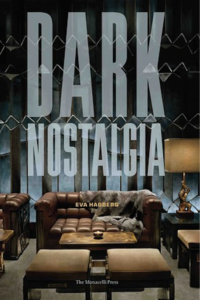Many of the pioneering women in the field of architecture, including Ray Eames, Norma Merrick Sklarek, and Mary Jane Long, earned their reputations on projects they designed, just like their male counterparts. But what if someone was able to have a significant impact on critical thinking within the field without actually designing anything? This is how we came to know Eva Hagberg, a person whose journey into and through architecture has been as interesting as it is purposely unconventional.
Writer, architectural historian, adjunct professor, once secret publicist, activist, and self proclaimed, “worst architectural student the school of architecture has ever seen.” Eva Hagberg is a woman in architecture who prides herself on her ideas and process rather than the execution of building a model for people to see.
Eva’s Backstory
From the age of 11, Hagberg was passionate about design and architecture; and while she earned a BA in the field from Princeton University, she never intended to practice. Rather, she began her professional life writing about architecture, choosing to engage in the field from a vastly different angle — interrogating the relationships between narrative and form.
From her early career as a writer in New York City, Hagberg became a secret publicist for architects and designers who were seeking help in articulating the stories behind their projects. As she functioned as a kind of ghost writer, she took advantage of the freedom to be unknown and unseen — “practically ungoogleable” as Hagberg describes herself. Because she opted to express herself by helping others find their voices, she was able to do the work that interested her the most without being pigeonholed, or specialized — architectural historian, adjunct professor, 77 year-old architect reminiscing about a project done in the 80s — or author of When Eero Met His Match.
Published Books

What is today a trite proverb — that behind every great man, is a great woman — Eva Hagberg’s When Eero Met His Match is as biographical as it is a poignant love story between critic and publicist Aline Louchheim and architect Eero Saarinen. Aline aided Eero in shaping his identity and prominence as a designer and architect. Throughout the book, Hagberg expresses just how important it is to embrace language and narrative as an integral part of the practice of architecture.
She has also published two architectural books through Monacelli Press, Dark Nostalgia and Nature Framed. Dark Nostalgia seeks to combine psychology, style, architecture, and art to express the reasoning behind our desire to live within lushly nostalgic interiors incorporating wood, velvet, fur, brick, and iron.

Nature Framed, on the other hand, explores an Optima favorite, the concept of biophilic design. Hagberg views 25 residential projects (framed with nature in mind) from around the United States that take the concept of “green living” to the next architectural level by asking, how close to nature can we be while remaining indoors?

As Hagberg herself explains, being the “worst architectural student the school of architecture has ever seen,” had its own set of merits. And because of her willingness to rethink, reframe and recontextualize stories about the built environment, Hagberg has carved her own path through sheer perseverance and a deep attunement to the soul of architecture and those who practice it.
Beyond her BA in architecture from Princeton University, Hagsberg went on to earn an MS in architecture from UC Berkeley. As well as a PhD in Visual and Narrative Culture from UC Berkeley. Today, as a member of the Columbia University Graduate School of Architecture, Planning, and Preservation faculty, her academic work focuses on the theoretical and historical approaches to publicity as a mode of architectural production, and lays out how the modern media system works.

